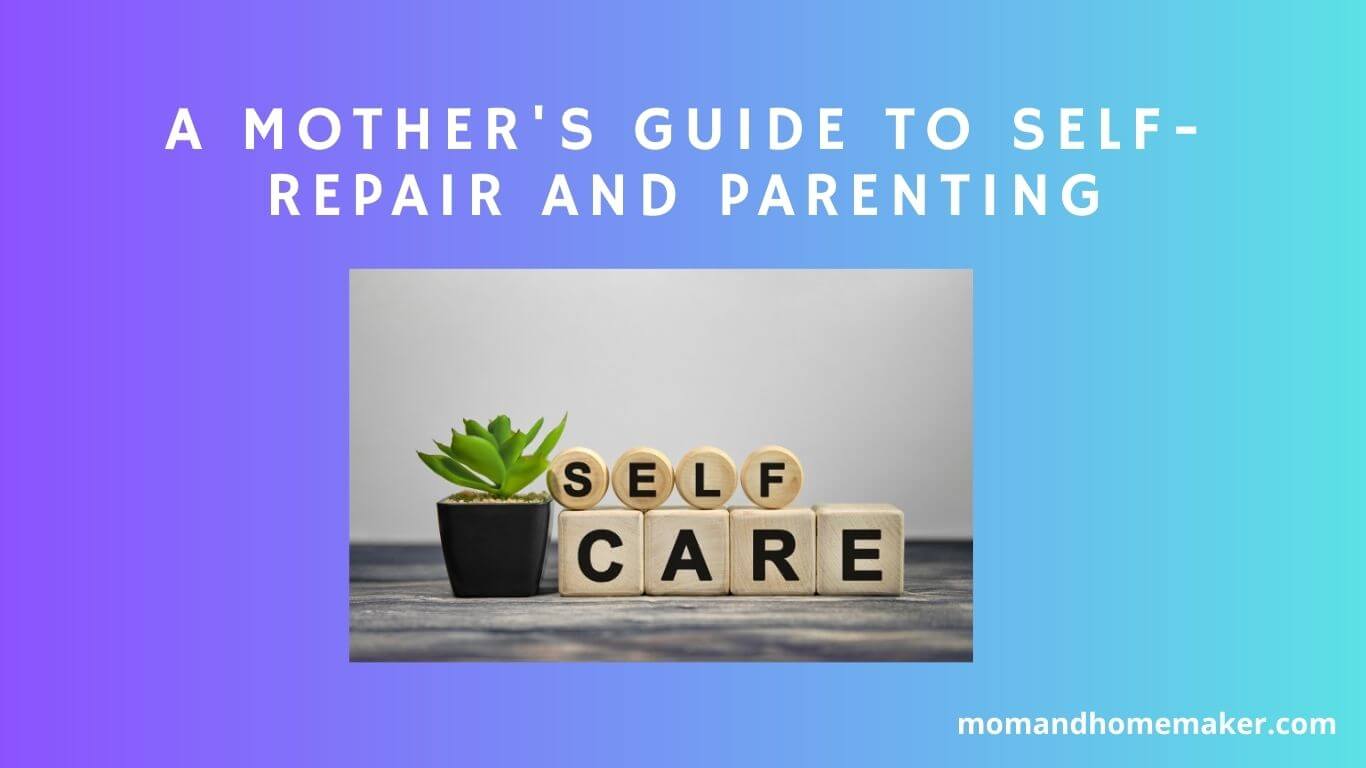Imagine this: you’re at a crowded party, surrounded by laughter and music. The atmosphere is lively, and everyone seems to be having a great time. But for you, there’s a lingering sense of unease, a tight knot in your stomach.
You glance nervously at the buffet table, your mind racing with thoughts of what could happen if you eat something that doesn’t agree with you. This fear, this overwhelming dread of vomiting, is known as emetophobia.
If you find yourself constantly worrying about getting sick or avoiding situations that might trigger your fear, you’re not alone. Emetophobia affects countless individuals, robbing them of the joy and freedom that others take for granted.
But fear not, because there is hope. In this guide, we will explore practical strategies and techniques to help you conquer emetophobia and reclaim your life.
From understanding the root causes of your fear to challenging negative thoughts and beliefs, we will guide you every step of the way. Through mindfulness and relaxation techniques, you will learn to find peace amidst the storm of anxiety.
Celebrate your small victories, track your progress, and reward yourself along the journey. And hear inspiring success stories from real-life individuals who have triumphed over emetophobia.
Embrace life beyond emetophobia, and let this guide be your roadmap to a future filled with freedom, joy, and the ability to serve others.
Table of Contents
Key Takeaways
- Understanding the root causes of emetophobia is crucial for effective support and treatment.
- Treatment options for emetophobia include cognitive-behavioral therapy, exposure therapy, and medication.
- Challenging negative thoughts and beliefs is a crucial step in overcoming the fear of vomiting.
- Incorporating coping strategies like deep breathing exercises and cognitive restructuring can help manage anxiety and nausea associated with emetophobia.
Understanding Emetophobia: Exploring the Fear of Vomiting
Emetophobia, a deeply rooted fear of vomiting, can be better understood by delving into the intricate layers of this anxiety disorder. If you or someone you know suffers from emetophobia, it’s important to explore treatment options and understand the impact it can have on daily life.
Emetophobia can be debilitating, causing individuals to go to great lengths to avoid situations that may lead to vomiting. This fear can manifest in various ways, such as avoiding certain foods or even social situations where illness may be present. The fear of vomiting can dominate thoughts and create constant anxiety, making it difficult to fully engage in life.
Understanding the impact of emetophobia is crucial in order to provide effective support and treatment. It can affect a person’s mental and emotional well-being, leading to isolation and a decreased quality of life. Exploring treatment options, such as cognitive-behavioral therapy, exposure therapy, and medication, can help individuals gradually overcome their fear and regain control over their lives.
By understanding the complex nature of emetophobia and exploring treatment options, individuals can find hope and support in overcoming their fear of vomiting. With the right tools and guidance, it’s possible to conquer emetophobia and live a fulfilling life free from the constraints of this anxiety disorder.
Recognizing the Symptoms of Emetophobia
If you’re constantly on edge, feeling sick to your stomach and trapped in a cycle of worry, you may be experiencing the relentless grip of this phobia. Emetophobia, the fear of vomiting, can have a significant impact on your daily life and overall well-being. Understanding the impact of this fear is crucial in overcoming it.
Emetophobia can manifest in various ways, both physically and emotionally. Physical symptoms may include increased heart rate, sweating, trembling, and nausea. Emotionally, you may feel intense anxiety, panic, and a constant fear of losing control. These symptoms can be overwhelming and make it difficult to function in everyday situations.
Seeking support and resources is essential in conquering emetophobia. Connecting with others who have experienced similar fears can provide a sense of comfort and understanding. Support groups, online forums, and therapy sessions can offer valuable guidance and coping strategies. Additionally, educating yourself about the phobia and its causes can help demystify the fear and empower you to take control of your emotions.
Understanding the impact of emetophobia and seeking support are essential steps in overcoming this fear. Remember, you don’t have to face it alone. There are resources available to help you on your journey toward conquering emetophobia and reclaiming your life.
Identifying the Root Causes of Emetophobia
Understanding the underlying factors that contribute to the development of this phobia can provide valuable insight into its root causes. Identifying triggers and exploring childhood experiences are crucial steps in overcoming emetophobia.
When it comes to identifying triggers, it’s important to pay attention to situations or objects that make you feel anxious or fearful. These triggers can vary from person to person, but they often revolve around situations that involve vomiting or the fear of vomiting. It could be the sight, sound, or even the thought of someone being sick that triggers your phobia. By recognizing these triggers, you can start to understand the specific situations that cause your anxiety to spike.
Childhood experiences can also play a significant role in the development of emetophobia. Traumatic events related to vomiting during childhood, such as witnessing someone being sick or experiencing a severe illness yourself, can deeply impact your perception and fear of vomiting. These experiences can create lasting emotional associations that contribute to the development of emetophobia later in life.
By identifying triggers and exploring childhood experiences, you can begin to unravel the root causes of your emetophobia. This understanding is crucial in developing effective strategies to overcome your fear and regain control of your life. Remember, you’re not alone, and with the right support and guidance, you can conquer emetophobia and live a fulfilling, fear-free life.
Challenging Negative Thoughts and Beliefs
Identifying and challenging negative thoughts and beliefs can be a powerful tool in overcoming your fear of vomiting. Studies have shown that individuals who actively challenge their fears are more likely to experience a reduction in anxiety symptoms. When it comes to emetophobia, challenging irrational thoughts is key.
Many people with emetophobia hold beliefs that are not based on reality. They think that vomiting is extremely dangerous or that they will never be able to handle it. Cognitive restructuring, a technique commonly used in cognitive-behavioral therapy, can help you challenge and change these negative beliefs.
The first step in cognitive restructuring is to identify the negative thoughts and beliefs that contribute to your fear of vomiting. These thoughts may include “vomiting is unbearable,” “I will never be able to cope with it,” or “vomiting means I am out of control.”
Once you have identified these thoughts, you can begin to challenge them by asking yourself questions like “Is there any evidence to support this belief?” or “What is the worst thing that could happen if I vomit?”
By challenging these negative thoughts and beliefs, you can start to replace them with more realistic and positive ones. For example, you might reframe the belief “vomiting is unbearable” to “vomiting is unpleasant but manageable.”
This process takes time and effort, but with practice, you can gradually change your thought patterns and reduce your fear of vomiting. Remember, you have the power to challenge and change your thoughts, and by doing so, you can conquer your emetophobia and live a more fulfilling life.
Practicing Mindfulness and Relaxation Techniques
Practicing mindfulness and relaxation techniques can help you, as an individual with emetophobia, cultivate a sense of inner calm and serenity. By incorporating mindfulness exercises and deep breathing techniques into your daily routine, you can effectively navigate your anxieties and overcome your fear of vomiting.
Mindfulness exercises involve focusing your attention on the present moment and accepting it without judgment. This practice allows you to observe your thoughts and feelings without getting caught up in them. With emetophobia, negative thoughts, and worries may consume your mind, leading to increased anxiety. However, by practicing mindfulness, you can learn to acknowledge these thoughts without allowing them to control you.
Deep breathing techniques are another valuable tool for managing emetophobia. When you feel overwhelmed by fear or anxiety, take a moment to pause and take a deep breath. Inhale slowly through your nose, filling your lungs with air, and then exhale gently through your mouth. This simple act of deep breathing can activate your body’s relaxation response, calming your mind and reducing anxiety.
Incorporating mindfulness and relaxation techniques into your daily routine can provide you with a sense of peace and control over your emetophobia. By dedicating time each day to practice these techniques, you can gradually overcome your fear of vomiting and regain a more fulfilling and anxiety-free life. Remember, you have the power to conquer your fears, and practicing mindfulness and relaxation techniques is a powerful step towards achieving that.
Gradual Exposure Therapy: Facing Your Fears Step by Step
Embarking on a journey to gradually face your fears, you’ll find that gradual exposure therapy is a powerful method for overcoming your anxieties. This therapy involves systematically and gradually exposing yourself to situations or stimuli that trigger your fear of vomiting. By doing so, you can gradually desensitize yourself to these triggers and regain control over your fears.
A key component of gradual exposure therapy is the exposure hierarchy. This involves creating a list of situations or stimuli that provoke anxiety related to vomiting, starting from the least anxiety-provoking to the most. For example, you may begin by simply reading or talking about vomiting, then progress to watching videos or looking at pictures of vomiting, and eventually, even simulating the act of vomiting.
Throughout this process, desensitization techniques are crucial. These techniques help you manage your anxiety and gradually reduce its intensity. Deep breathing exercises, progressive muscle relaxation, and positive self-talk can be invaluable tools to help you stay calm and focused during exposure exercises.
Remember, facing your fears step by step may feel challenging, but it’s a necessary part of your journey toward conquering emetophobia. Gradual exposure therapy empowers you to break free from the grip of fear and reclaim your life. Stay determined, be patient with yourself, and trust in the process – you’re capable of overcoming your fear of vomiting.
Seeking Professional Help: Therapy Options for Emetophobia
Now that you’ve learned about the power of gradual exposure therapy in facing your fears step by step, it’s time to consider seeking professional help to conquer your emetophobia once and for all. Remember, you don’t have to face this journey alone, and there are professionals who specialize in treating this specific fear.
- Alternative therapies: exploring non-traditional approaches – While traditional therapy methods can be helpful, it’s important to explore alternative therapies that may resonate with you on a deeper level. These may include techniques such as hypnotherapy, acupuncture, or art therapy, which can provide unique benefits and help you overcome your fear in a different way.
- Medication options: understanding pharmaceutical interventions – In some cases, medication may be recommended to help manage the symptoms of emetophobia. It’s important to work closely with a healthcare professional to understand the different pharmaceutical interventions available and determine if they’re a suitable option for you.
Remember, seeking professional help is a courageous step towards conquering your emetophobia. These therapy options can provide you with the support, guidance, and tools you need to overcome your fear and live a life free from anxiety. You deserve to find peace and happiness, and with the right professional help, you can achieve just that.
Building a Support Network: Connecting with Others Who Understand
By connecting with others who have experienced similar struggles, you can find solace and understanding in the journey of overcoming your fear of vomiting. Building a support network is crucial in navigating the challenges of emetophobia.
One way to connect with others is by joining online support groups. These groups provide a safe space to share your fears and anxieties, as well as to receive support and encouragement from individuals who truly understand what you’re going through. Online support groups allow you to connect with people from all over the world, which can be comforting as it shows you’re not alone in your struggles.
In addition to online support groups, therapy groups can also be an invaluable resource. These groups are often facilitated by mental health professionals who specialize in treating emetophobia. Being part of a therapy group allows you to engage in group discussions, learn from other’s experiences, and gain valuable insights into your own fears and anxieties. It provides a sense of community and belonging, knowing that you are surrounded by individuals who are on the same journey toward conquering their fear of vomiting.
Remember, connecting with others who understand can provide you with the support and encouragement you need to overcome your fear of vomiting. Whether it’s through online support groups or therapy groups, reaching out and building a support network is an essential step in your path to recovery.
Developing Coping Strategies for Nausea and Anxiety
Start your journey towards finding relief from the discomfort of nausea and anxiety by developing personalized coping strategies that can provide you with a lifeline during difficult moments.
One effective strategy is cognitive restructuring, which involves identifying and challenging negative thoughts and beliefs that contribute to your anxiety and nausea. By replacing these negative thoughts with more positive and realistic ones, you can reduce your overall anxiety levels and minimize the physical symptoms of nausea.
Another helpful coping strategy is practicing deep breathing exercises. When you feel nauseous or anxious, take slow, deep breaths in through your nose and out through your mouth. Focus on filling your abdomen with air and then slowly exhaling. Deep breathing can help calm your nervous system, reduce muscle tension, and decrease feelings of nausea.
In addition to cognitive restructuring and deep breathing exercises, it can be beneficial to engage in activities that distract your mind from the discomfort. This could involve listening to soothing music, reading a book, or engaging in a hobby that you enjoy. By redirecting your attention, you can help alleviate the intensity of your nausea and anxiety.
Remember, developing coping strategies takes time and experimentation. It’s important to be patient with yourself as you navigate this process. With perseverance and the right strategies in place, you can conquer your fear of vomiting and find relief from the discomfort of nausea and anxiety.
Healthy Lifestyle Habits: Managing Stress and Promoting Well-being
To effectively manage stress and promote overall well-being, you can incorporate healthy lifestyle habits into your daily routine. By making small changes to your lifestyle, you can reduce stress and anxiety, and improve your overall quality of life.
Here are four self-care routines that can help you conquer emetophobia and promote a sense of well-being:
- Practice mindfulness: Take a few moments each day to focus on your breath and be present in the moment. This can help reduce stress and bring a sense of calmness to your mind and body.
- Engage in regular physical activity: Exercise releases endorphins, which are natural mood boosters. Find an activity that you enjoy, whether it’s going for a walk, doing yoga, or dancing, and make it a regular part of your routine.
- Prioritize sleep: Getting enough sleep is crucial for managing stress and anxiety. Create a relaxing bedtime routine and ensure you’re getting the recommended 7-9 hours of sleep each night.
- Connect with others: Building a support system of friends, family, or a therapist can provide a sense of belonging and help you feel supported during challenging times. Reach out to loved ones regularly and seek their guidance when needed.
Incorporating these stress reduction and self-care routines into your daily life can help you overcome emetophobia and promote overall well-being. Remember, taking care of yourself isn’t selfish; it allows you to better serve others.
Overcoming Triggers: Dealing with Situations Associated with Vomiting
Are you struggling with situations that remind you of vomiting and wondering how to overcome them? Dealing with triggers can be a challenging part of overcoming emetophobia, but with the right strategies, you can manage your anxiety and regain control over your life.
The first step in overcoming triggers is to identify them. Think about the situations or objects that make you anxious and bring up thoughts of vomiting. It could be seeing someone else vomit, being in crowded places, or even certain smells. Once you’ve identified your triggers, you can begin to develop a plan for dealing with them.
One effective strategy is gradual exposure therapy. Start by exposing yourself to a mild trigger and gradually increase the intensity over time. For example, if seeing someone vomit is a trigger, you can start by watching videos of people vomiting and then gradually work your way up to being in the same room as someone who’s vomiting. Remember to practice deep breathing and relaxation techniques to manage your anxiety during these exposures.
Another helpful technique is cognitive restructuring. Challenge the negative thoughts and beliefs associated with vomiting. Remind yourself that vomiting is a natural bodily function and not something to be feared. Replace negative thoughts with positive affirmations and focus on the present moment.
Managing triggers takes time and practice, so be patient with yourself. Celebrate small victories along the way and seek support from loved ones or a therapist. With determination and the right strategies, you can overcome your fear of vomiting and live a fulfilling life.
Celebrating Small Victories: Tracking Your Progress and Rewarding Yourself
Take a moment to acknowledge the progress you’ve made in overcoming triggers and reward yourself for the small victories along the way. Overcoming emetophobia isn’t easy, and every step forward deserves recognition.
One effective way to stay motivated and measure your progress is by tracking it. Keep a journal or use a smartphone app to record your achievements. For example, successfully eating a meal that used to trigger anxiety or being able to handle a situation associated with vomiting without panicking. Seeing your progress written down can be empowering and serve as a reminder of how far you’ve come.
In addition to tracking your progress, it’s important to celebrate your achievements along the way. Each small victory is a step closer to conquering your fear completely. Celebrate by treating yourself to something you enjoy, like your favorite meal or a day of pampering. It’s important to reward yourself for the hard work and effort you’ve put into facing your fears head-on.
Remember, overcoming emetophobia is a journey, and it’s important to celebrate each milestone along the way. By tracking your progress and celebrating your achievements, you’ll stay motivated and encouraged to continue pushing forward. Keep going, and soon you’ll find that you’ve conquered your fear of vomiting. You’re doing amazing, and you deserve to acknowledge and celebrate every step of your journey.
Maintaining Progress: Strategies for Long-Term Recovery
Sustaining progress in your journey to overcome the fear of vomiting is like tending to a delicate garden, nurturing it with consistent care and attention. As you continue on your path to recovery, it’s essential to implement strategies for relapse prevention and incorporate self-care practices.
Here are three key strategies to help you maintain your progress:
- Stay mindful and aware: Continue practicing mindfulness techniques to stay present and recognize any signs of anxiety or fear. By being mindful of your emotions and thoughts, you can address them before they escalate and potentially lead to a relapse. Take deep breaths, engage in grounding exercises, and remind yourself of the progress you’ve made.
- Build a support network: Surround yourself with understanding and supportive individuals who can help you through challenging times. Reach out to friends, family, or even support groups who can provide guidance, encouragement, and a listening ear. Having a strong support network can make a significant difference in your long-term recovery.
- Prioritize self-care: Incorporate self-care practices into your daily routine to nurture your overall well-being. This can include activities such as exercise, meditation, journaling, or engaging in hobbies you enjoy. Taking care of yourself physically, mentally, and emotionally will help you build resilience and reduce the risk of relapse.
Remember, progress takes time, and setbacks may occur. Be patient with yourself and celebrate every milestone along the way. By implementing these strategies and incorporating self-care practices, you’ll be better equipped to maintain your progress and conquer emetophobia.
Inspiring Success Stories: Real-Life Accounts of Emetophobia Triumphs
As you continue on your journey to overcome the fear of vomiting, let these inspiring success stories from real people who have triumphed over emetophobia serve as a beacon of hope and motivation. It is important to remember that you are not alone in your struggle, and there are others who have faced and conquered their fears. These stories can provide valuable insights and coping techniques that may help you on your own path to recovery.
Here are some examples of success stories from individuals who have overcome emetophobia:
| Success Story | Coping Techniques | Self Help Resources |
|---|---|---|
| Jayda’s Triumph | Jayda found that deep breathing and positive self-talk helped her manage panic attacks. She also utilized distraction techniques, such as listening to music or engaging in a hobby, to shift her focus away from her fears. | Jayda found comfort in reading books. She also found online support groups and forums helpful in connecting with others who shared her experiences. |
| Zack’s Journey | Zack discovered that practicing mindfulness and meditation helped him stay grounded during moments of anxiety. He also learned to challenge his negative thoughts and replace them with more rational and positive ones. | Zack found solace in websites like emetophobiahelp.org and emetophobiarecovery.com. These online resources provided educational materials, forums, and support networks for individuals dealing with emetophobia. |
As you read these success stories, take note of the coping techniques that resonated with you and consider exploring the self-help resources mentioned. Remember, each person’s journey is unique, and what works for one may not work for another. Stay committed to your recovery and believe in your ability to conquer emetophobia.
The Journey Continues: Embracing Life Beyond Emetophobia
Now that these individuals have overcome their fear of vomiting, they’re able to fully embrace life and all the experiences it has to offer. They can travel the world and try new and adventurous foods without the constant worry of getting sick. For example, Emma, who used to let her emetophobia control her life, is now able to enjoy spontaneous trips with her friends and indulge in local cuisines without anxiety holding her back.
Embracing uncertainty becomes a thrilling adventure for those who’ve conquered emetophobia. They no longer fear the unknown, but instead, they find joy and fulfillment in the unexpected twists and turns that life brings. They understand that life is full of uncertainties, but they’ve learned to navigate through them with a newfound sense of confidence and resilience.
These individuals have discovered that embracing uncertainty allows them to grow and discover new opportunities. They no longer let fear dictate their choices, but instead, they approach every situation with an open mind and a willingness to explore. Whether it’s trying a new hobby, pursuing a career change, or forming new relationships, they’re not held back by the fear of the unknown.
Finding joy and fulfillment becomes a priority for these individuals. They understand the value of living life to the fullest and savoring every moment. They take pleasure in the simple things, such as spending time with loved ones, engaging in meaningful activities, and pursuing their passions. They’ve learned to appreciate the beauty and wonder of life, and they make the most of every opportunity that comes their way.
Embracing life beyond emetophobia means embracing uncertainty and finding joy and fulfillment in every experience. These individuals have overcome their fears and are now able to fully enjoy all that life has to offer. They serve as an inspiration to others who may be struggling with their own fears, showing them that it’s possible to conquer their anxieties and live a life filled with happiness and adventure.
Conclusion
Congratulations! You’ve taken the first steps towards conquering your emetophobia and reclaiming control of your life. By challenging negative thoughts, practicing mindfulness, and celebrating your victories, you’ve shown incredible strength and resilience.
Remember, the journey to overcoming your fear of vomiting may have its ups and downs, but with determination, you can embrace life beyond emetophobia.
So go forth and let your fears melt away like snowflakes in the warm embrace of spring. You’ve got this!

















